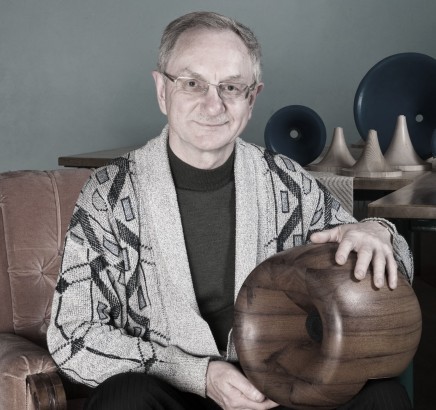| The whole story started when together with my long-term friend and colleague, Alex M., who lives in California, we began to develop an active loudspeaker system for recording studios. Even though it was 1998, we had active crossovers (an active filter for frequency separation) designed by us, aided by our extensive experience in acoustic systems development. At that time, professional new-generation drivers by TAD (Technical Audio Devices) appeared on the US market, thus we got an opportunity to begin the design of 2-way studio monitors with high frequency horn. The system was intended for the US market and designed to compete with such professional manufacturers of studio monitors as Westlake Audio, TANNOY, GENELEC and others. At first, the goal was to design mid-field monitors for recording studios but it appeared that this model was well suited as a high-end system for home use, actually, the only modification required was the cabinet. A special version was developed and exotic hardwood was used for the front panel and horn.
If you ask what the difference is between the NIDA system and other high-end systems, the answer is quite simple – a buyer invests every dollar in the highest quality of sound. You can hear it for yourself! Ceslovas Paplauskas, * Nida is a unique location, which holds the largest sand dunes in Europe. Along with whole Curonian Spit, Nida was added to the UNESCO World Cultural Heritage List. |
While selecting sound reproducing equipment you can apply either faith or science. |

